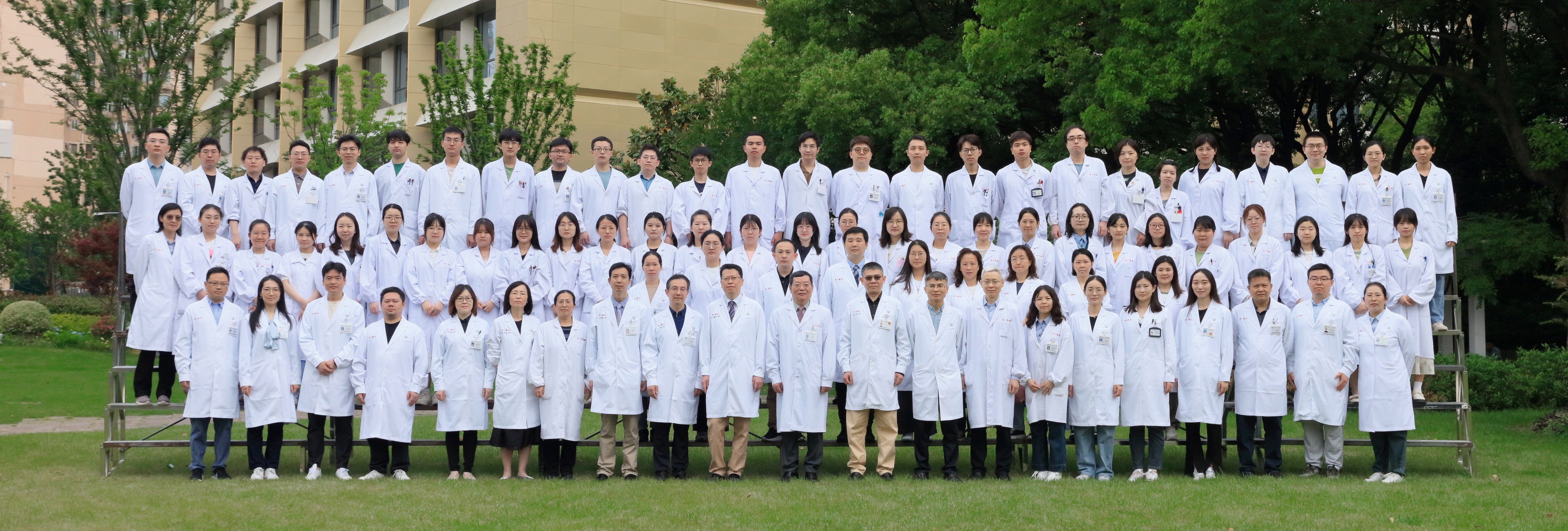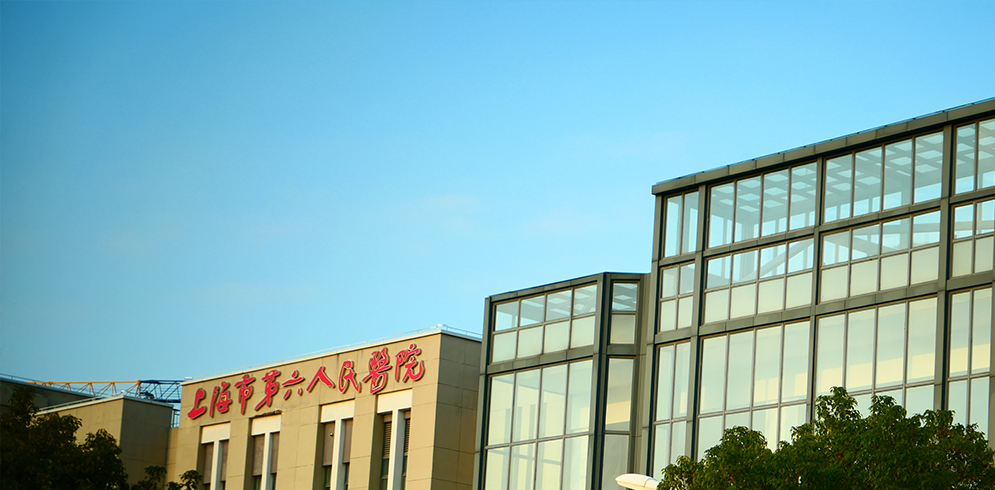
Introduction
The Department of ENT & HN Surgery of Shanghai Sixth People's Hospital has a rich history, dating back to its establishment in 1904. Recognized for its excellence, the department was designated as National Key Clinical Specialty by National Health Commission in 2011 and granted Shanghai Top-priority Key Discipline in 2013. In 2018, the department played a pivotal role in the establishment of Shanghai Key Laboratory of Sleep Disordered Breathing. That same year, it was honored as the "Collaborative Innovation Team" by the Shanghai Municipal Education Commission, ranking among the top 7-12 nationwide and 2-3 in East China in the mainstream specialty rankings. Today, the department stands as a beacon of comprehensive development in medical services, education, research, and innovation.
Operating in both Xuhui and Lingang campuses, the department boasts a total of 96 beds, catering to an annual outpatient volume of over 230,000 and admitting more than 4,800 inpatients annually. With an impressive annual operation volume exceeding 3,600, the department specializes in three sub-disciplines: otology, rhinology, and pharyngology and head and neck surgery. Additionally, the department houses notable facilities such as the Shanghai Hearing Test Center, the Snoring Diagnosis and Treatment Center, and the Vertigo Disease Diagnosis and Treatment Center of Shanghai Jiao Tong University. Moreover, institutions like the Shanghai Sixth People's Hospital of Cranial Surgery and the End Surgery Diagnosis and Treatment Center, Children's Snoring Diagnosis and Treatment Center, and Allergic Rhinitis Diagnosis and Treatment Center wield significant influence nationwide.

Specialties
- Otoneurosurgery and Lateral Skull Base Surgical Techniques: Our department has performed over 500 cases of acoustic neuroma resection utilizing various functional preservation routes, achieving an impressive total tumor resection rate of 98% and a facial nerve anatomical preservation rate of 96.8%. The treatment outcomes are comparable to those of renowned skull base surgery centers worldwide. Techniques such as facial nerve decompression, transplantation, and anastomosis have been employed in treating peripheral facial paralysis, with over 300 cases completed and an overall long-term effectiveness rate exceeding 85%. Additionally, the department has successfully completed more than 300 cases of surgical resection of various skull base tumors, including jugular glomus tumors, meningiomas, teratomas, and petrous apex cholesteatomas, achieving satisfactory overall therapeutic effects. Advanced nerve microvascular decompression and cutting surgeries have been utilized to address various cranial nerve functional disorders such as glossopharyngeal nerve, trigeminal neuralgia, and facial nerve spasm. Moreover, the hospital was the first in China to pioneer cochlear implantation via the upper ear canal route and has mastered advanced hearing reconstruction technology for a variety of challenging and complex cases. Furthermore, it was the first to perform one-time shaping carbon dioxide laser-assisted artificial stapes surgery.
- Specialized Treatment for Tinnitus: The department pioneered the establishment of an interval threshold test using tinnitus matching frequency as the background signal and developed an objective quantitative detection technology for tinnitus. This technology offers significant advantages in evaluating the efficacy of repetitive transcranial magnetic stimulation (rTMS) in tinnitus treatment. Additionally, it was the first to discover the role of the prefrontal lobe in "gating" or "noise elimination" in tinnitus. Targeting the prefrontal lobe for treatment increased the effective rate from 42.8% to 71.4%, surpassing the 35-50% effective rate abroad. Furthermore, a novel treatment strategy for rTMS guided by high-density EEG was developed to overcome the chronic tinnitus bottleneck. These findings were integrated into the 2020 European rTMS treatment guidelines.
- Specialized Treatment of Vertigo: Our department has developed a novel strategy for follow-up and home self-repositioning treatment of benign paroxysmal positional vertigo (BPPV), resulting in an increased cure rate from 53.4% for a single outpatient repositioning to 83.8%. This approach reduces the number of visits and shortens the treatment duration. Furthermore, we have conducted research and development on BPPV diagnosis and treatment equipment, elevating the diagnostic accuracy from 53% to 98.5%. Additionally, we have devised a three-dimensional nystagmus recognition model based on a deep neural network architecture, enabling intelligent recognition and diagnosis of three-dimensional nystagmus. Leveraging the pathological characteristics of Meniere's disease, we have created an MRI assessment technology utilizing the endolymphatic volume percentage as the primary indicator, accurately reflecting effusion degree and its dynamic changes. This enriches the comprehensive diagnostic methods for Meniere's disease. Moreover, we conduct dynamic assessments of vestibular dysfunction and adjust treatment plans in real time, facilitating remote treatment for patients at home.
- Endoscopic Nasal Skull Base Surgery: We pioneered transnasal pituitary tumor resection technology in China, commencing endoscopic pituitary tumor resection in 2006 and completing over 500 transsphenoidal pituitary tumor resections since then. We routinely repair cerebrospinal fluid rhinorrhea in various nasal endoscopic locations, including the nasal slope, sphenoid platform, ethmoid fossa, ethmoid roof, posterior wall of the frontal sinus, and medial side of the middle cranial fossa, utilizing techniques such as the bathtub plug method and sandwich method to address skull base defects. We were the first in China to introduce the use of vascularized nasal septum mucoperiosteal flaps for repairing skull base defects. Additionally, we pioneered endoscopic surgeries in areas such as the petrous apex slope, pterygopalatine fossa, infratemporal fossa, and middle cranial fossa through the pterygoid process approach. Our department has conducted clinical research on minimally invasive surgical treatment of skull base for recurrent nasopharyngeal carcinoma and researched vascularized tissue flap combined with covered stent for treating radiation-induced skull base osteonecrosis of nasopharyngeal carcinoma. We have established a precise diagnosis and treatment model for evaluating and intervening in recurrent nasopharyngeal carcinoma involving the internal carotid artery (ICA) and participated in formulating the expert consensus on surgical treatment of recurrent nasopharyngeal carcinoma.
- Treatment of naso-orbital Diseases: Our department offers advanced treatments for traumatic optic neuropathy, intraorbital infections, and other naso-orbital related diseases. With expertise in endoscopic optic nerve decompression and orbital tumor resection, the department ensures comprehensive care for patients with orbital disorders.
- Diagnosis and Treatment of Allergic Rhinitis: Through our Allergic Rhinitis Diagnosis and Treatment Center, our department specializes in diagnosing allergic rhinitis, conducting allergen screening, and administering sublingual and subcutaneous immunotherapy for allergens, including conventional immunotherapy, cluster immunotherapy, and impulse immunotherapy. Additionally, patients with allergic rhinitis combined with asthma undergo Omalizumab treatment. The center also offers surgical interventions for allergic rhinitis, such as vidian neurectomy, highly selective posterior nasal neurectomy, and septum turbinateplasty, ensuring patients have access to a comprehensive range of treatment options.
- Diagnosis and Treatment of OSAHS in Children: Drawing from the world's largest single-center cohort on obstructive sleep apnea-hypopnea syndrome (OSAHS) with precise phenotypic data, our department has pioneered precision treatment for pediatric OSAHS. We have established a dedicated ward and specialized team for pediatric OSAHS treatment, conducting over 600 surgical interventions annually. Additionally, we organize regular children's open days at Shanghai Key Laboratory of Sleep and Breathing Disorders, earning an outstanding reputation.
- Surgical Treatment of Obstructive Sleep Apnea Hypopnea Syndrome (OSAHS): We have pioneered the establishment of the SleepView modified diagnostic model for OSAHS diagnosis, enhancing diagnostic efficiency. Additionally, we have developed a precise positioning diagnostic method for OSAHS to guide surgical interventions, including the creation of upper airway CT cephalometric fixed head frames, cephalometric systems, and snoring diagnostic positioning systems. We advocate for OSAHS precise surgical sequence treatment, integrating mainstream technologies such as CPAP, oral appliances, upper airway surgery, bimaxillary advancement, and weight loss surgery. Furthermore, we have led the way in China by performing innovative surgical procedures including GAHM, modified GAHM, genioglossus advancement surgery with the chin spine trephine system, Pillar implantation, simultaneous UPPP + GAHM surgery, bimaxillary advancement surgery (MMA), tongue root radiofrequency ablation, and epiglottis suspension for OSAHS upper airway treatments. These efforts have been recognized with the third prize of the Shanghai Science and Technology Progress Award and the third prize of the Shanghai Medical Science and Technology Progress Award.
- Craniomaxillofacial Fractures: Leveraging the resources of National Center for Orthopedics, our department specializes in the repair and reconstruction of craniofacial fractures. With expertise in complex skull base and maxillofacial fractures, the department ensures optimal outcomes for patients requiring craniofacial surgery.
- Treatment of Benign and Malignant Tumors of the Head and Neck: Specializing in surgical resection and functional reconstruction for head and neck tumors, our department prioritizes enhancing patients' quality of life alongside achieving optimal treatment outcomes. Leveraging our profound expertise in tumor management, we offer tailored care to patients diagnosed with both benign and malignant head and neck tumors.




